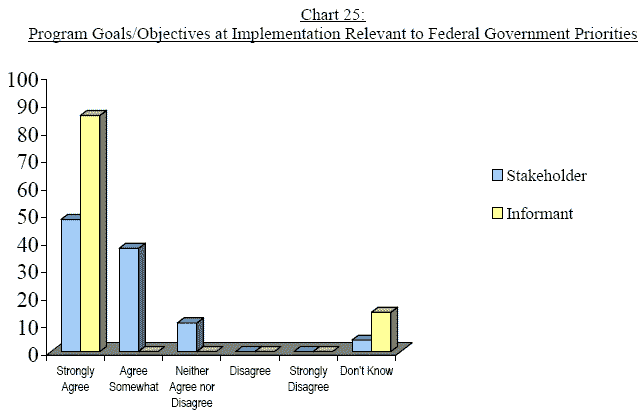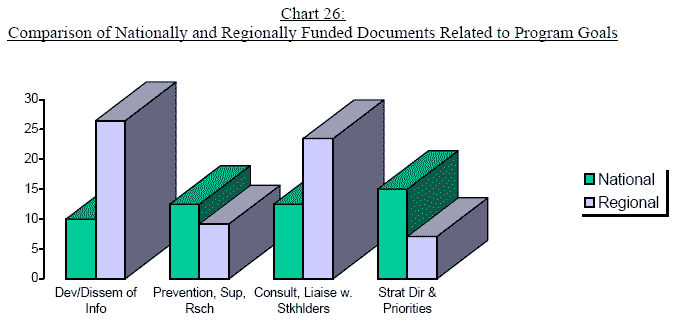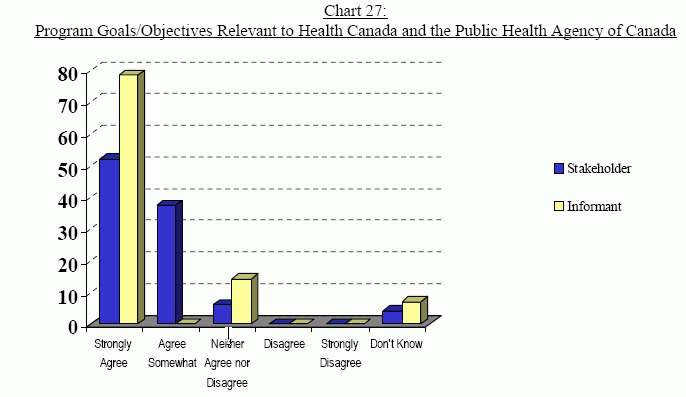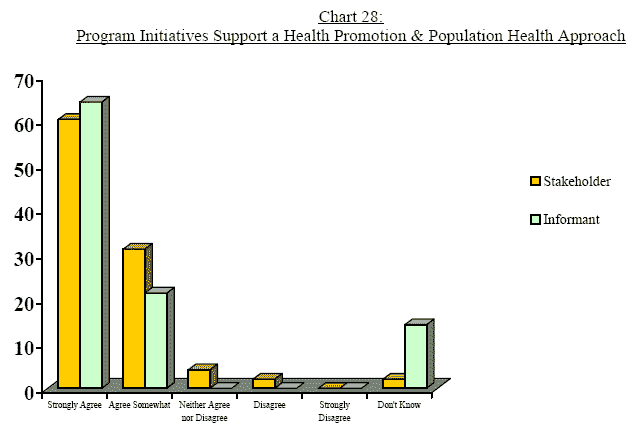Common menu bar links
E-mail this page
Evaluation of the Hepatitis C Prevention, Support and Research Program 1999/2000 – 2005/2006
Previous | Table of Contents | Next
5.3 Strategic Alignment
As indicated in the section entitled Evolution of the Hepatitis C Prevention, Support and Research Program, the initial five years of the Program (spanning 1999/2000 to 2003/2004) were under the purview of Health Canada. A one-year extension to March 31, 2005 was approved in Budget 2004 to allow continuation of the Program's work while the PHAC was being established. An additional extension of the Program to March 31, 2006 was approved in Budget 2005 while PHAC developed an integrated strategy for addressing infectious diseases.
Stakeholders and key informants were asked about the relevance of the Program goals and objectives to the priorities of the federal government at the time of the Program's implementation. Chart 25 shows only 47.9% of stakeholders compared to almost 86% of key informants “strongly agreed”. Key informants emphasized that Program goals “must line-up with federal government priorities”.

The survey responses reflect the findings of the document review (Chart 26) where nationally funded programs tended to focus more on strategic program goals (i.e., strategic direction and priorities, 15% or 12 of 80), while regionally funded documents focused on the goals of development and dissemination of information (26.5% or 52 of 196) and ongoing consultation and liaising with stakeholders (23.5% or 46 of 196).

Responses were also solicited on whether: The Program goals and objectives were relevant to the priorities of Health Canada (prior to September 2004) and PHAC (after September 2004). Chart 27 illustrates a slightly higher percentage of stakeholders (87.6%) than key informants (78.6%) tended to “strongly agree/agree somewhat”. Interestingly, a relatively high percentage of key informants (over 14%) “neither agreed nor disagreed” suggesting their lack of commitment to this statement.

A final question in this series addressed whether the Program implemented initiatives to support a health promotion and population health approach. While there was a fairly high level of agreement for both stakeholders and key informants (Chart 28), these results are less impressive in light of respondent's comments. One informant noted the Program's important role in addressing PHAC's objectives, but added: “Unfortunately, the Program didn't work very far ‘upstream'; initiatives were more immediate. The Program used a ‘population lens' – ‘downtown, east-side'. Now we need to incorporate all other infectious diseases as well – collaborate with HIV/AIDS, STIs, etc. A disease approach is more comprehensive and global. Downstream we need to benefit many diseases in addition to HCV.”

Previous | Table of Contents | Next
